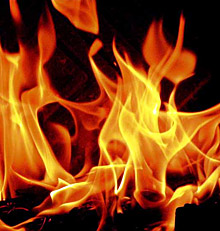
New apartments will have to be equipped with fire alarms by their owners
 |
The mandatory equipment of smoke detectors and extinguishers also applies to buildings undergoing extensive renovations after July 1. The same obligation will also apply to hostels and social care facilities, which the regulation does not explicitly prescribe to provide electrical fire signaling. Fire alarms will also need to be installed in accommodation facilities on construction sites.
According to the regulation, a detector should be placed in each apartment at the exit to the escape route; in maisonette apartments and in apartments larger than 150 square meters, an additional alarm must be placed in another suitable part of the apartment. The same rule applies to family homes, with the stipulation that if there are multiple apartments in the house, the owner must place another alarm in the highest point of the shared hallway.
In hostels, detectors must be installed in all rooms, common areas, and areas leading to exits from the building, according to the regulation.
In developed countries, according to spokesman for the General Directorate of the Fire Rescue Service Peter Kopáček, fire detectors are completely common. For example, in Denmark, 75 percent of households use them, and in Finland, even 23 percent more.
The current regulation already governs the equipment of apartments and family homes with extinguishers. However, the new regulations clarify which device is suitable for a given building. For example, family homes will need to acquire a device with a minimum extinguishing capacity of 34A, with the option to equip the house with multiple devices with lower extinguishing capacity, whose total must be at least 34. The extinguishing capacity is always indicated on the device's label. Group A designates devices for extinguishing fires of solid substances, B is for liquids, and C for ignited gases.
The new regulation also addresses the rules for fire protection in already constructed buildings in detail. It specifies the maximum amount of flammable materials in protected escape route areas and defines the minimum safe distances for various appliances from flammable materials.
"The regulation sets only the mandatory minimum; it is up to citizens to decide what level of safety comfort they will ensure," said Kaiser. "There are indeed very few things worse than when your home burns down. You not only lose furniture or clothing, but smoke and fire will irreparably destroy your personal belongings or documents," he added.
Since 2003, 351 people have lost their lives in household fires, which accounts for more than half of the fire victims. Another 473 people were injured. Household fires have also caused approximately 1.4 billion crowns in damages over the past five years.
The English translation is powered by AI tool. Switch to Czech to view the original text source.
0 comments
add comment












